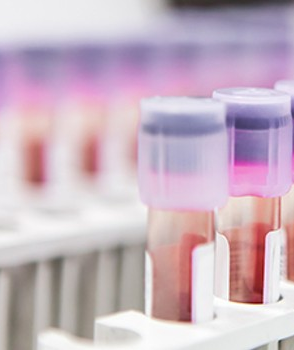Karyomegaly - Definition, Symptoms, Causes, Treatment
Karyomegaly Definition
Karyomegaly is defined as the abnormal enlargement of the nucleus of a cell. Karyomegaly is thought to originate from the replication of nucleic acid without nuclear division. It is marked by the growth of the nuclei, which is mostly seen in the proximal convoluted tubule cells. Affected nuclei are frequently multinucleoid and hyperchromatic. Chemical administration has been linked to the development of karyomegaly. In long-term studies, it is often labeled as preneoplastic and leads to tubule neoplasia.
Karyomegaly Causes
Toxic injury can sometimes cause a particular change in the cortical tubules and medullary ducts, which is characterized by nuclear expansion. This change can occur in some but not all cases. The primary cause of karyomegaly is most likely nuclear divisions without accompanying cytokinesis, which leads to enlarged nuclei.
It is most frequently observed in rats that have been treated with xenobiotics; however, larger nuclei or multinucleated cells may sometimes be observed in the medullary ducts of control rhesus and cynomolgus monkeys. This is considered to be a typical finding in these species. The nuclei's profiles may be slightly uneven, and they may feature vesicular chromatin with several nucleoli or hyperchromatic staining patterns. Most of the time, the pathophysiology is unknown.

In long-term trials with kidney carcinogens like ochratoxin and aflatoxin as well as with a few particular substances like some antineoplastic substances that impact the cell cycle, karyomegaly in proximal tubule cells has been seen. However, there is no clear association between karyomegaly and neoplastic tendency; consequently, karyomegaly is not always considered a preneoplastic feature. Karyomegaly may also coexist with other more prevalent types of kidney degeneration and necrosis as a result of nephrotoxic exposure, as seen in rodents given trichloroethylene or monkeys given antiretroviral medications.
karyomegaly Symptoms
The presence of karyomegalic cells in the kidney, brain, lungs, and gastrointestinal system are all hallmarks of the multiorgan condition known as karyomegalic tubulointerstitial nephritis. A significant number of patients report kidney failure and recurrent respiratory infections. When the kidneys are affected, patients will experience chronic renal failure in their fourth or fifth decade.
Evidence suggests that FAN/ mutations are the cause of the disease. Cells exhibiting noticeable nuclear enlargement, atypia, and nearby interstitial fibrosis can be found in the renal tubular epithelium. The nuclei lack the proliferative markers Ki-67 and proliferating cell nuclear antigen.
karyomegaly Treatment
In order to make a diagnosis, it is necessary to rule out exposure to toxins as well as chemotherapy and radiation treatments. It is also necessary to take into account the possibility of a viral cytopathic effect.
Since there is no specific treatment for karyomegalic interstitial nephritis (KIN), the patient is counseled about the prognosis of KIN and is instructed to adopt a diet that is appropriate for his renal functions. He is also advised to stay away from anything toxic or medications that can compromise his kidney.
 Reviewed by Simon Albert
on
October 20, 2022
Rating:
Reviewed by Simon Albert
on
October 20, 2022
Rating:











